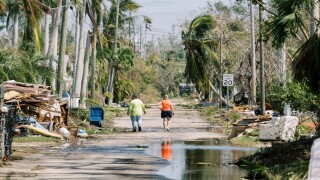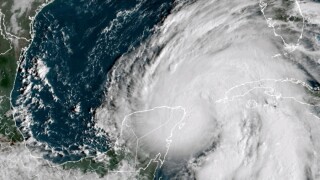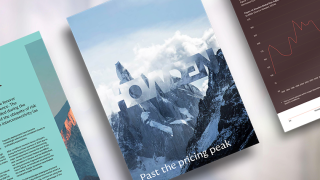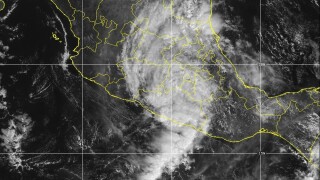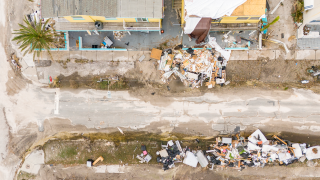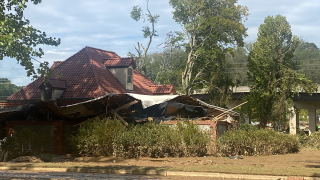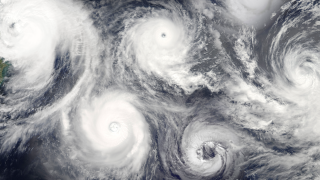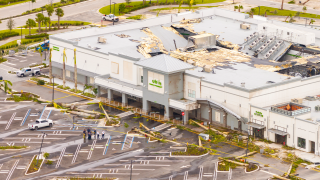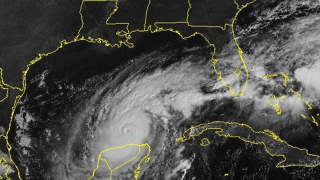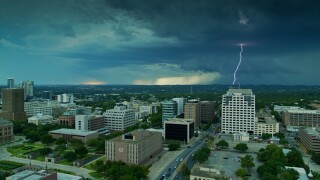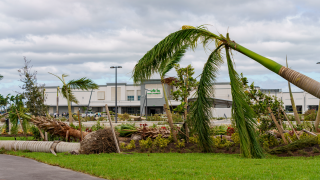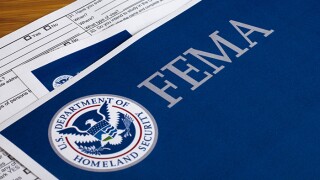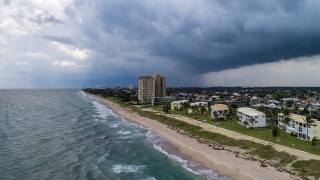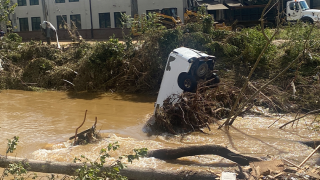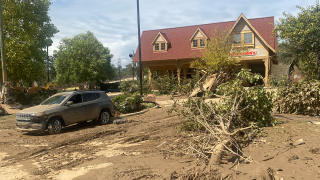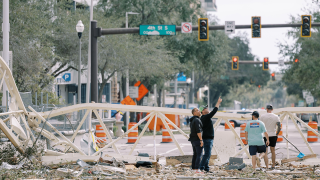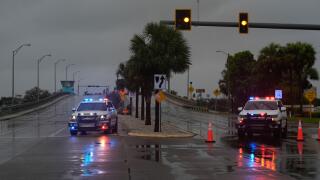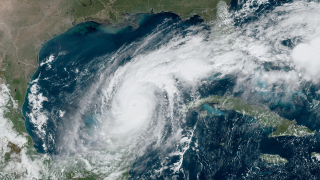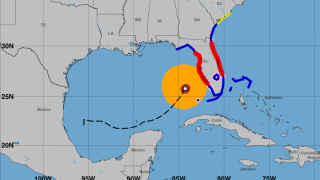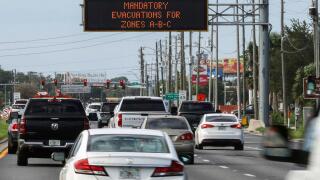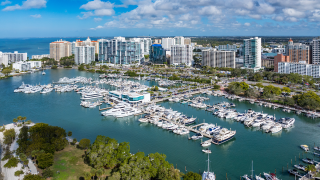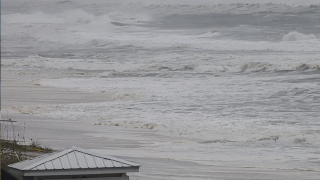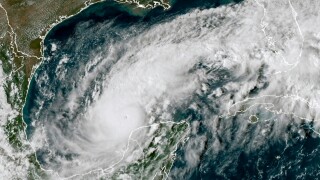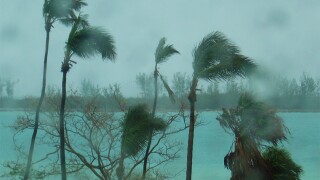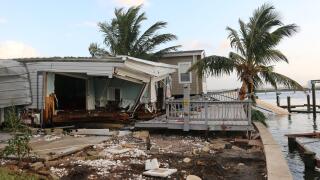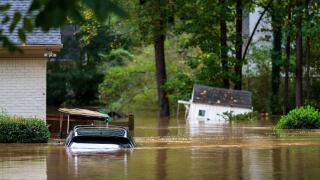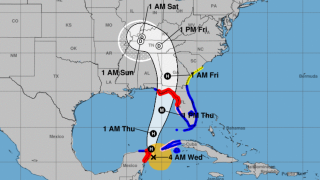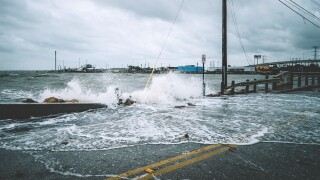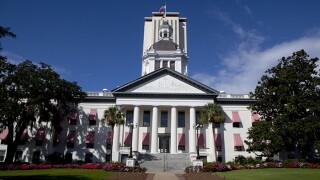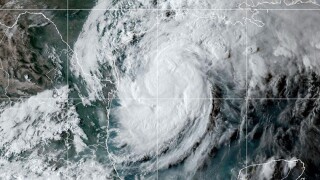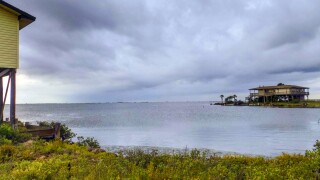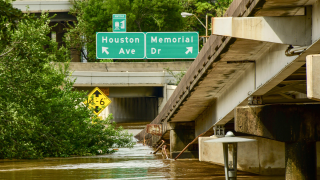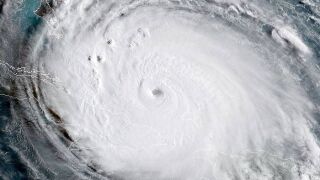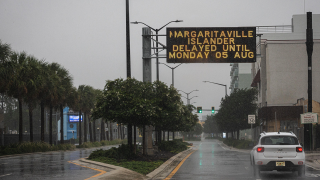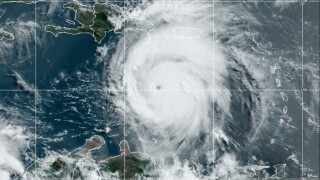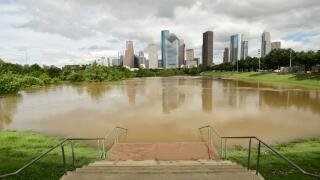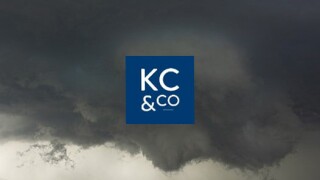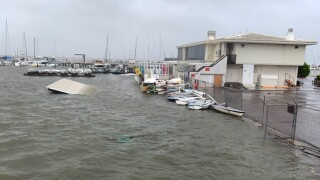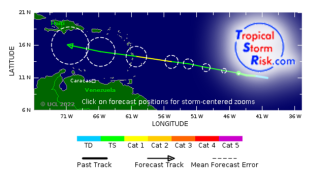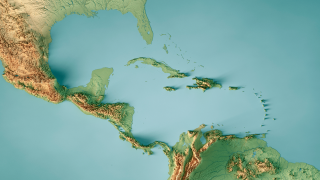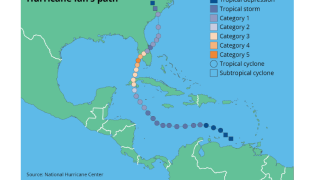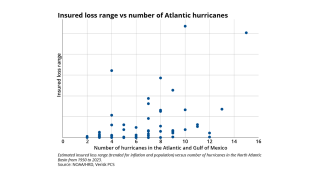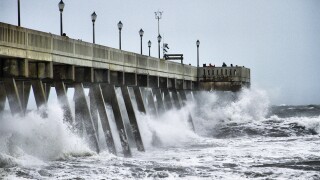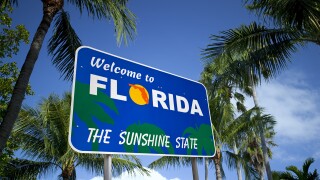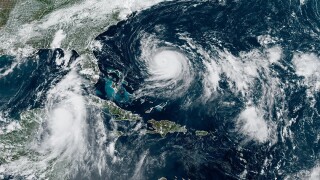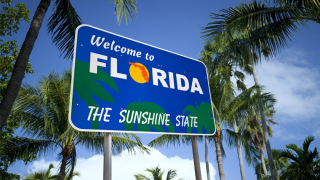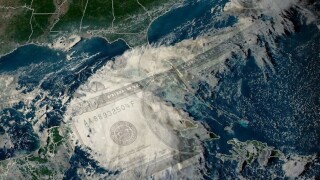Hurricane
-
The company also has $100mn for US hurricane events.
-
The deals covered Euro wind and Italy quake, Florida hurricane and a retro bond.
-
The agency forecasts up to five major hurricanes and 19 named storms.
-
The revision is significantly lower than the $4.5bn October estimate.
-
Premiums ceded to the ILS vehicle increased by 76% to $433mn.
-
The largest individual net loss at EUR230mn was caused by Hurricane Milton.
-
The bond was trading at around 12.3c on the dollar in the secondary market last month.
-
This came as the market’s underwriting profit dipped 10% for 2024.
-
The CEO expects to see a larger shift between condos and apartments in 2026 and 2027.
-
HCI will now consist of two operating units – the other being its four underwriting entities.
-
ILS is delivering “a growing contribution” to the group, according to CEO Cloutier.
-
The firm reported record fee income of $128.2mn in 2024, up 26%.
-
Comments came as universal reported a 4.2 CoR jump to 107.9% in Q4.
-
Hurricane Milton accounted for 60% of the firm’s Q4 large loss tally.
-
Several Florida start-ups are poised to begin writing business this year.
-
Total combined losses for the agency’s Helene and Milton estimates stand at $31.8bn.
-
AuM remains generally flat at UCITS funds over the weeks since LA fires started.
-
Over 2024, four hurricanes added 13 points of cat-loss impact to the combined ratio.
-
Capital inflows, notably into UCITS funds, and accumulated returns supported issuance of $17.2bn in 2024.
-
Axis Capital’s fee income from strategic capital partners grew 39% to $85mn in the year to 31 December 2024, up from $61mn the year prior, the firm’s Q4 earnings release said.
-
The Floridian also expects to report its “best earnings quarter” for Q4 2024.
-
-
The industry loss number has increased threefold from an initial $5bn pick.
-
Total economic losses were $368bn, 14% above the 21st century average.
-
The carrier’s Milton loss came in below expectations, but its fire claims will be “material” in Q1.
-
CEO Cerio highlighted changes that allowed the insurer of last resort to combine commercial, coastal and personal lines.
-
The index’s performance in November was stronger than the prior year, although YTD returns are behind 2023.
-
Hurricane Milton resulted in the largest insured loss of the year at $25bn.
-
Cat bonds were a key supply-side driver at 1 January 2025.
-
The UCITS cat bond segment has added 54% in AuM since Hurricane Ian.
-
Casualty ILS made inroads, while hurricane hedging strategies came into focus.
-
The company no longer has any exposure to reinsurance contracts.
-
Overall, reinsurers accepted that rate cuts were still leaving them with strong margins.
-
TSR anticipates that next year will see an ACE value of 129 compared with the 30-year norm of 122.
-
The state reinsurer of last resort discussed options for 2025 reinsurance buying strategy.
-
It estimated insured losses from nat cats on track to exceed $135bn in 2024.
-
The carrier attributed the intensification of storms this season to climate change.
-
Lloyd’s has taken around 6% of aggregate US hurricane losses in recent years, and disclosed estimated net losses from Helene and Milton of $1.8bn to $3.4bn.
-
Losses from Hurricane Milton are expected to affect only select junior structures.
-
The 2024 hurricane season stayed within predictions for high activity but lacked market-moving events.
-
The Class B notes on the carrier’s debut deal attach at $500mn of losses.
-
Euler ILS Partners and Tropical Storm Risk teamed up to produce an updated version of an earlier study.
-
The loss figure has increased 200% from the initial number provided in October.
-
Moderate impacts to ILS returns are anticipated from Hurricane Milton.
-
The association’s Hurricane Beryl net loss stood at $455mn as of 30 September.
-
The estimate includes $102mn from Milton and $114mn Helene development.
-
It is targeting $25mn GWP this year and $50mn GWP in 2025.
-
Helene losses were spread wider than initially suggested, in contrast to Milton claims.
-
The ILS unit’s AuM was higher by $100mn compared to $1.9bn as of 30 June.
-
Twia’s SCS losses in Q1-Q3 2024 have been more than double the budgeted amount.
-
The reinsurer took $743mn of nat-cat losses in the quarter.
-
The firm recorded a 13.3% nat cat impact to the P&C combined ratio.
-
Fema's traditional reinsurance programme will attach at losses of $7bn and above.
-
The model factors in the effects of climate change to date.
-
A total of $2.1bn in Fema money has been approved for the state.
-
The reinsurer confirmed its intention to reduce the K-Cession sidecar for 2025.
-
The failure of a Jamaica bond to pay out following Hurricane Beryl damage has brought focus onto the deals.
-
The Florida carrier reported a 103.5% combined ratio in Q3.
-
In other property, Helene and Milton will assure rates remain attractive, he added.
-
The carrier said it expected its Milton losses to fall below its EUR500mn ($537mn) Helene loss.
-
The firm’s AuM in four key vehicles rose $526mn in Q3.
-
The Floridian also announced the completion of its first-ever takeout from Florida Citizens.
-
The combined ratio included 17 points of catastrophe losses in the third quarter.
-
CEO Adrian Cox said Beazley’s recent $290mn ILW purchase was not driven by “capital flexibility in and of itself”.
-
Latest pricing suggests secondary market traders are baking in further loss development.
-
The firm will provide an update on 22 November to avoid holiday season.
-
September was the strongest performing month since the index began in 2006.
-
The low PCS number is presenting a challenge for ILW buyers and sellers.
-
The commercial carrier also reported a Hurricane Milton pre-tax net loss forecast of $250mn-$300mn.
-
The estimate implies a roughly $15bn homeowners’ industry loss from the hurricane.
-
Andrade flagged expected 5% to 10% increases in the US and Europe.
-
The figures imply first-layer reinsurance recoveries for Helene.
-
The NFIP’s traditional reinsurance coverage kicks in at $7bn of losses.
-
The loss tally is considerably lower than estimates issued by model vendors.
-
Insured losses for 9M 2024 have hit $102bn, according to a report.
-
Liberty Mutual expects $550mn in Helene losses versus Milton’s $250mn-$350mn.
-
The carrier’s estimated pre-tax losses from Milton are $65mn to $110mn.
-
The carrier is looking at a $600-$900mn hit from Debby, Helene, Milton.
-
Pricing is expected to “stay neutral of soften” for January renewals.
-
The Floridian anticipates Hurricanes Debby and Helene to incur losses of $3.8mn in Q3 2024.
-
The firm still expects to deliver positive net income for Q3 2024.
-
Assuming Munich Re takes roughly a 3% market share of hurricane losses suggests a ~$20bn industry loss for Helene.
-
Managers expect Hurricane Milton losses to shore up pricing.
-
Many in the ILS sector are bullish on Milton losses falling at the lower end of earnings impacts.
-
Losses from the hurricane may not significantly impact on many funds’ annual returns.
-
Earlier this week, RMS estimated insured losses for Helene and Milton at $35bn-$55bn.
-
Florida domestics, aggregate retro and flood deals were all marked down.
-
HCI is estimated to incur a net expense of $125mn for Milton in Q4 2024.
-
Most of the insured loss was attributable to wind.
-
Icosa said certain cat bonds could see more than 0.2 points of price movement.
-
Twia filed for the rate hike in August after an actuarial analysis showed that rates were inadequate.
-
The company incurred $563mn of total cat losses related to the storm.
-
The bulls expect around $20bn-$30bn in Milton losses, with the bears anticipating $40bn-$50bn.
-
The estimate includes private cover for residential, commercial and industrial property.
-
RMS will issue its final loss estimates for Milton later this week.
-
Plenum said wind damage from Milton could lead to “moderate” losses for its cat-bond funds.
-
Hurricane Milton will show the ILS product behaving as investors expect it to.
-
The company is monitoring the NFIP’s flood-exposed bonds.
-
This is a far narrower drop than post Ian, when the index was lost 10%.
-
Milton made landfall near Siesta Key yesterday, leaving 2.7 million homes without power.
-
Losses to the NFIP-sponsored cat bonds remains a key area of uncertainty, the investment manager reported.
-
A $40bn Milton loss should barely dent many ILS returns but will trap some capital.
-
On Wednesday, the model had suggested a mean figure at $25.3bn.
-
The hurricane is likely to prevent rate reductions in property cat in 2025.
-
The event has spared (re)insurers the more extreme scenarios that were under discussion earlier this week.
-
Milton made landfall south of Tampa Bay at Category 3 on Wednesday night.
-
This is based on insured loss estimates of between $20bn and $60bn.
-
The pre-landfall figures are not an official loss estimate from the modeller.
-
The hurricane has destroyed hundreds of homes and left more than 2.7 million homes without power in Florida.
-
Milton’s center is projected to make landfall near or just south of Tampa Bay.
-
Integrity Re 2024-D and Lightning Re 2023-1A are two bonds that were marked down, although no trading has occurred.
-
The NHC storm track predicts landfall below Sarasota, south of Tampa Bay.
-
Hurricane Milton’s overall impact, based on the current pre-landfall scenario, could lead to “moderate losses” for Plenum’s funds.
-
Collateralised reinsurance and retro are in the firing line.
-
The government-backed scheme has greater take-up in areas in Milton’s path.
-
Restrengthening to Category 5 is still possible, Siffert warns.
-
Earlier this week, Moody’s RMS Event Response estimated the event would cost $8bn-$14bn.
-
Prior forecasts indicated a more northward track towards Tampa Bay and St Petersburg.
-
The storm is now predicted to make landfall south of Tampa Bay.
-
The NHC is predicting storm surge, exacerbated by the tide, as high as 15 ft for Tampa Bay.
-
The Mexican cat bond offers $125mn of protection against Atlantic named storms.
-
A hurricane warning has been issued for the east coast of Florida.
-
Most sources noted expectations of a $50bn+ event, but the range of outcomes is huge.
-
Hurricane Milton strengthened from a tropical storm on Sunday to a Category 5 storm yesterday.
-
Destructive storm surge is expected along Florida’s West Coast on Wednesday.
-
Moody’s also predicts losses to the NFIP at potentially more than $2bn.
-
The storm is packing maximum sustained winds of 175mph.
-
Milton is expected to move north of the Yucatan Peninsula today and cross the eastern Gulf of Mexico by Wednesday.
-
Parts of the Yucatan peninsula are under a hurricane warning, though the storm is expected to remain offshore.
-
The NFIP’s losses are estimated at $4.5bn-$6.5bn.
-
Experts have raised concerns over significant rainfall, record-setting storm surge and lingering Hurricane Helene debris.
-
The “exceptionally large and powerful” Category 4 storm made landfall in Florida last month.
-
Rising sea levels and ocean warming were likely factors in Helene’s strength.
-
The figure does not include NFIP losses.
-
Most of the estimated insured losses will be retained by insurers.
-
Key floods this year outside of the US include the Rio Grande do Sul.
-
The biggest limitation to growth is supply, given ILS capital “reticence” after the 2016-22 years.
-
The numbers will be refined further to arrive at an industry loss estimate.
-
Moody’s described Hurricane Helene as “like Idalia but worse”.
-
The storm made landfall as a major hurricane in Florida’s Big Bend region.
-
The ratings agency expects insured losses of around $5bn for Helene.
-
The manager is hopeful of closing all contracts by the end of 2024.
-
Tallahassee avoided a major hit – but flood and storm-surge losses remain unknown.
-
The NFIP has a higher take-up rate in Tampa Bay, which experienced record coastal storm surge.
-
Helene is expected to become a post-tropical low later today.
-
More than one million Floridians are without power after the storm hit.
-
Additional strengthening is expected before Helene makes landfall in Florida tonight.
-
Only three storms have impacted a larger area than Helene since 1998.
-
An unexpected shift east towards Tampa could push losses beyond $10bn.
-
TSR predicts Atlanta, Georgia, could face Cat 1 windspeeds as the storm moves further inland.
-
The storm is expected to make landfall in Florida’s Big Bend coast on Thursday evening.
-
Helene is currently a Category 1, but rapid strengthening is anticipated over the next day.
-
The ILS manager expects “minimal, if any, losses” to bonds in its funds.
-
In the best-case scenario, a Big Bend-landing storm could cost $3bn-$5bn, Howden Re said.
-
A hurricane warning is in effect from the Anclote River to Mexico Beach, Florida.
-
A storm surge warning is in effect from Flamingo to Indian Pass.
-
The storm could become a major hurricane by Thursday.
-
The system is forming in the same area as 2022’s Hurricane Ian.
-
Floir approved nearly 650,000 policies for takeout from Citizens for October and November.
-
Moody’s also predicts losses to the NFIP at less than $200mn.
-
The estimate is like others in the market, suggesting a relatively small loss from the event.
-
The hurricane has led to a “surge” in insurance claims related to floods, according to the IBC.
-
The ratings agency said companies focused on growing business in Gulf Coast states, however, would face a “key test” as claims materialised.
-
A sub-$3bn industry insured loss event would be similar to estimates for hurricanes Beryl and Debby.
-
Francine has been the eighth Category 2 or larger storm to make landfall in Louisiana since 2000.
-
The sponsor has kept $25mn of principal in extension for any further loss development.
-
The storm is expected to weaken to a post-tropical cyclone later tonight.
-
Kin’s reinsurance structuring means the bond’s losses will be kept to a minimum.
-
‘Life-threatening’ storm surge and hurricane-force winds expected for the state, according to the NHC.
-
Francine is expected to make landfall in Louisiana tomorrow.
-
The estimate from the Perils-owned company does not include any losses from Hurricane Debby.
-
A hurricane watch is now in effect for the Louisiana coastline.
-
Most of the ILS capital was attracted to the cat bond market.
-
Cat bond funds continue to draw interest as private ILS more challenged.
-
The broker said it expects strong ILS capital inflows to continue.
-
-
Returns were down on 2023, which benefited from favourable Ian loss development.
-
The storm made landfall on Saturday as a Category 1 hurricane.
-
Ernesto’s maximum sustained winds have reached 100 mph.
-
-
Flights cancelled as typhoon ramps up to Cat 4.
-
Ernesto is expected to track past Bermuda on Saturday with hurricane conditions.
-
Moody’s also predicts losses to the NFIP at less than $300mn.
-
Both groups continue to call for a highly active season, however.
-
Several bonds suffered declines in value from February to July.
-
Subsidiaries Core and Typtap have applied to participate in the November Citizens policies assumption.
-
The storm brought a lot of rain, but the Floridian doesn’t provide flood insurance.
-
The loss is based on modelled outputs, as opposed to an initial loss estimate.
-
The board of directors has voted for a 10% rate hike.
-
Its forecast for intense hurricanes is unchanged at six.
-
The NHC has said there is potential for “historic heavy rainfall” across southeast Georgia and South Carolina.
-
The ‘life threatening’ hurricane has potential for “historic heavy rainfall” in the southeastern United States.
-
The carrier purchased an additional $150mn of cover.
-
The modeller said 3 million homes were without power at its peak.
-
The figure is well above the historical average of $39bn for this century.
-
The biggest losses were from wind damage after the storm’s Texas landfall.
-
Relentless focus on annual outcomes provides a packaging that doesn’t fit the purpose.
-
Uncertainty around the quantum remains due to policy deductible variation.
-
The insured loss from Beryl in the US was pegged at $2.7bn.
-
Industry losses of $800mn-$1.2bn are expected from Beryl's impact in Texas.
-
Hurricane Beryl was a “harbinger of a hyperactive season,” CSU said.
-
Secondary market activity and hedging would be likely if a Beryl-sized storm tracked toward the US.
-
Houston mayor John Whitmire said: “We woke up this morning on the dirty side of a dirty hurricane.”
-
Beryl has been downgraded to a tropical storm but is still life-threatening, with news media reporting two deaths so far.
-
Availability of ILS has so far fulfilled investor demand.
-
The latest Insider ILS Outstanding Contributor for the year said 2011 was an under-appreciated turning point for the market.
-
According to BMS, Hurricane Beryl is likely to be a retained event for most insurance carriers.
-
Insured losses could be less than $1bn if current NHC forecasts are accurate.
-
The forecast comes following the earliest Category 5 storm on record.
-
The parametric trigger on the World Bank deal specifies storm pressure of 955mb or lower but its initial reported landfall was at 975mb.
-
Hurricane Beryl is expected to strengthen again after hitting the Yucatan Peninsula.
-
The parametric structure would have paid out at slightly lower storm pressure.
-
The storm destroyed housing in St Vincent and the Grenadines and Grenada.
-
The storm is predicted to hit the Caymans tonight or early Thursday.
-
Recent modelling predicts a strong probability of direct landfall in Jamaica.
-
Grenada and St Vincent were spared the full brunt of the storm.
-
Hurricane conditions are expected in Jamaica on Wednesday, according to the NHC.
-
-
Cat bond spreads stabilised as maturities brought capital to deploy into the market, after an earlier spike.
-
Grenada and St Vincent and the Grenadines are under the most threat from the storm.
-
The broker estimated ILS capacity reached a record $107bn as cat bond interest surged.
-
The broker said high ILS maturities would boost cat bond issuance though the hurricane season would impact capital availability.
-
The model uses machine learning and daily data to forecast hurricane seasons.
-
Tropical Storm Alberto, the first named storm of this year’s Atlantic hurricane season, made landfall this morning over Mexico and Texas, bringing heavy winds and gusty rains, according to the US National Hurricane Center (NHC).
-
Alberto is the first named storm of this year’s hurricane season.
-
A degree of pricing volatility was evident in the market this week.
-
The firm is the sole provider to offer index services in the US.
-
The research body initially warned of an active storm season in April.
-
Reinsurers are much better placed to absorb cat losses; insurers are carrying more risk.
-
This compares to the 2023-2024 tower which covered losses up to $2.83bn.
-
The firm now predicts six major hurricanes and 24 tropical storms.
-
Additional capacity for upper-layer coverage is driving rate reductions, the broker says.
-
Forecasters have warned that a number of meteorological factors could make this year the most active on record.
-
The company increased its full year 2024 adjusted net income guidance.
-
Most years since 2014 have seen at least one named storm before 1 June.
-
Sources said that while a late June-early July IPO is still on the table, a Q4 or early 2025 listing is expected.
-
Concerning hurricane forecasts are among the factors driving tighter reinsurer capacity.
-
The outlook calls for an 85% chance of an above-normal season.
-
The program includes all perils coverage and third-event protection.
-
Cession ratios declined at three of the four publicly listed Floridians.
-
The company plans to reduce its quota share to 20% from 40%.
-
Rates are still materially higher than pre-pandemic and lower layers are holding firmer.
-
First event tower for the Northeast exhausts at $1.1bn, at $1.3bn for Southeast and $750mn in Hawaii.
-
Various trends may work together to hold the cat markets up for longer than some had feared.
-
State interference is likely to be required if an attack is large enough to trigger bonds now on the market, experts say.
-
Panellists at the Insurance Insider ILS conference say forecasts can push capital to “the edges” of the market.
-
Increased ILW purchasing reflects cash-rich funds looking to protect return levels.
-
Researchers expect 15-20 named storms to form in the Atlantic Basin.
-
Insured loss for Q1 was 10% higher than the decadal average of $18bn.
-
Tropical Storm Risk (TSR) has updated its forecast for North Atlantic hurricane activity, predicting a "hyper-active season" in 2024, with activity being around 70% above the 1991-2020 climate norm.
-
Eleven hurricanes are predicted, with five expected to reach Category 3 or higher.
-
FHCF rates are also projected to decrease by a statewide average of 7.38%.
-
Sources said the deal was roughly three times over-subscribed as cat becomes hot.
-
The carrier closed its Sussex Diversified Fund in October last year.
-
The body’s budget committee is again pressing Citizens over solvency concerns.
-
Sources are expecting multi-billion new limit to be placed.
-
Some $415mn of capacity entered the market last year.
-
Estimates were revised from $845mn to $740mn.
-
Exposure updates played a greater role than expected.
-
Sources said preparations for a 2024 IPO were halted, but work could resume later this year.
-
The vast majority of 2023 recoveries were from events in prior years.
-
The vulnerability updates are the biggest driver of loss changes.
-
The notes were further marked down after a year-end Ian loss update.
-
The bond is trading at 70c-75c in the dollar in the secondary market.













